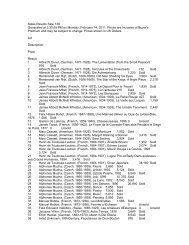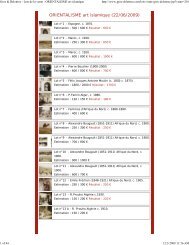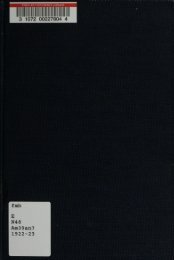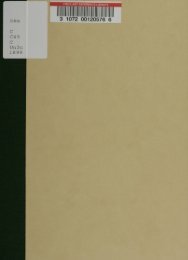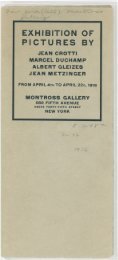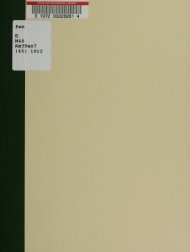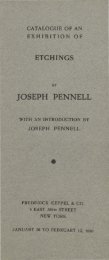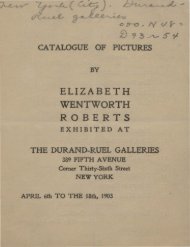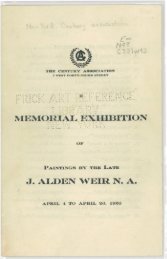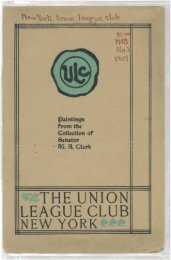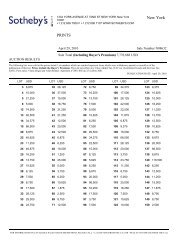Shepherds of the black-headed people - New York Art Resources ...
Shepherds of the black-headed people - New York Art Resources ...
Shepherds of the black-headed people - New York Art Resources ...
- No tags were found...
Create successful ePaper yourself
Turn your PDF publications into a flip-book with our unique Google optimized e-Paper software.
for rolling its surface on <strong>the</strong> clay <strong>of</strong> <strong>the</strong> sealing, and for impression<strong>of</strong> one its butts into it. In one <strong>of</strong> <strong>the</strong> Ur cases, <strong>the</strong> counter-markingseal sunk so deep into <strong>the</strong> sealing clay that we may clearly see apart <strong>of</strong> a cylindrical surface easily compatible with <strong>the</strong> idea <strong>of</strong> acylinder-seal butt. 29But why would <strong>the</strong> Ur seal bearers so meticulously use one seal fortwo different procedures? One <strong>of</strong> <strong>the</strong> possible factors at playrepresents a simple solution – to enhance <strong>the</strong> visibility, and henceidentity, <strong>of</strong> an individual seal-bearer, <strong>the</strong> <strong>of</strong>ten unclear and blurredseal rolling might have received a supplement in stamping one <strong>of</strong><strong>the</strong> seal ends onto <strong>the</strong> s<strong>of</strong>t clay bearing <strong>the</strong> maze <strong>of</strong> <strong>the</strong> sealpattern. 30 Ano<strong>the</strong>r possible explanation is that <strong>the</strong> use <strong>of</strong> <strong>the</strong>cylinder’s side and butt enlarges <strong>the</strong> possible statements in complexadministrations, in <strong>the</strong> way that <strong>the</strong> <strong>of</strong>fice and <strong>the</strong> individual arerepresented by <strong>the</strong> butt and <strong>the</strong> side respectively (Mat<strong>the</strong>ws 1993).By way <strong>of</strong> conclusions, I wish to make <strong>the</strong> following observations:1) Though <strong>the</strong> sealings are mixed in <strong>the</strong> layers <strong>of</strong> <strong>the</strong> pits, <strong>the</strong>ydo constitute a fairly homogenous material group exceptsome intrusive pieces.2) Most <strong>of</strong> <strong>the</strong> motifs are derived from Late Uruk glyptic, andfew relations to <strong>the</strong> ones <strong>of</strong> <strong>the</strong> ED II period can beobserved, which may give us a hint for <strong>the</strong> dating <strong>of</strong> <strong>the</strong> SIS8-4 seals.3) The SIS 8-4 art represents a local development <strong>of</strong> Late Urukcreations, and it may thus constitute a "missing link"between Late Uruk oeuvres and <strong>the</strong> fully fledged style <strong>of</strong> EDI-II periods.4) A major change is <strong>the</strong> ushering in <strong>of</strong> <strong>the</strong> man-in-<strong>the</strong>-kilt(sovereign) figure who kills <strong>people</strong> and participates atbanquets.5) The CLS, present since Jemdet Nasr times, bear out certainlinks among sou<strong>the</strong>rn Mesopotamian municipalcommunities.6) The majority <strong>of</strong> motifs turn up in several (up to ten)variants, which seems to correspond to administrativeand/or economic units. If this interpretation is right, it can29 UE III: 38 and 38a.30 See, for instance, photographs <strong>of</strong> UE III: 393 and 398.26



